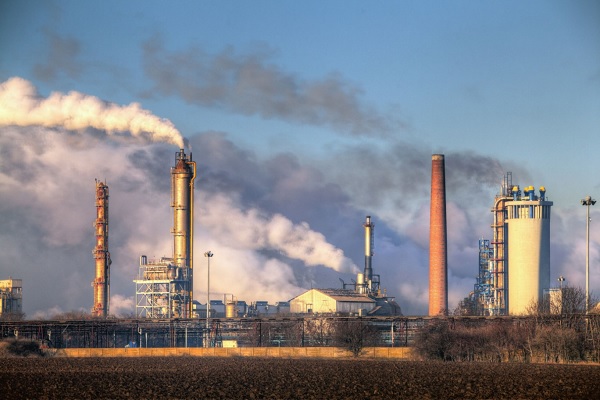
- Environmental Studies - Home
- Environment
- Ecosystem
- Classification of Ecosystem
- Functions Of Ecosystem
- Ecological Pyramid
- Energy Flow in Ecosystem
- Natural Resources
- Water Resources
- Mineral Resources
- Land Resources
- Energy Resources
- Biodiversity
- Biodiversity Hotspots
- Threats to Biodiversity
- Conversation of Biodiversity
- Pollution & Control
- Air Pollution
- Water Pollution
- Noise Pollution
- Soil Pollution
- Solid Waste Management
- Hazardous Waste Management
- Water Waste Management
- Global Environmental Problems
- Ozone Depletion
- Deforestation & Desertification
- International Protocols
- Policy & Legislation
- Air,Water & Forest Acts
- Environmental Impact Assessment
- Towards Sustainable Future
Environmental Studies - Air Pollution
Every day, every moment, we breathe polluted air and may become a victim of air pollution. It is estimated that an average adult exchanges 15 kg of air a day, in comparison to about 1.5 kg of the food consumed and 2.5 kg of water intake. It is obvious that the quantum of pollutants that enter our body through respiration would be manifold in comparison to those taken in through polluted water or contaminated food.

Air pollution is one of the most widespread forms of pollution all over the world. Wind is the main agent of air pollution. It gathers and moves pollutants from one area to another, sometimes reducing the concentration of pollutants in one location, while increasing it in another.
Causes of Air Pollution
Apart from the natural causes of pollutants, as stated above, human interaction and resource utilization is perhaps adding more pollutants to the atmosphere.
Industrialization − Industries big or small require steam to run. The steam is produced by burning fossil fuels such as coal, coke, and furnace oil. These fuels while burning release toxic gases in large amount into the atmosphere.
Automobiles − To meet the demands of exploding human population, the number of automobiles is increasing at a great space. The automobile exhausts are responsible for about sixty percent of air pollution. Released carbon monoxide from the automobiles pollutes the air and harms trees and other natural vegetation. It also has ill-effects on human health.
Chlorofluorocarbons − Scientists are now alarmed regarding the increased concentration of chemical substances together called chlorofluorocarbon in the atmosphere. These substances are responsible for creating holes in the ozone layer causing unwanted imbalance in the heat budget. These are produced by modern gadgets such as air conditioners, refrigerators, dyers, etc.
The adverse effects of air pollution appear in the form of poor quality of air, acidic precipitation (rain, snow and hail) and deposition, and other health hazards.
The main pollutants of air are carbon dioxide (CO2 ), carbonic acid (H 2SO2), water (H2O), nitric acid (HNO3O ), and sulphuric acid (H2SO4 ).
Air pollution has harmful effects on natural vegetation and human health such as respiratory illnesses. Acidic precipitation is highly fatal for aquatic flora and fauna, monuments, and also for natural vegetation.
Air Pollution Control
Air pollution control is an onerous task as there are large number of pollutants involved in air pollution. Some of these are even difficult to detect. However, there can be some basic approaches to control air pollution. They are as follows.
Preventive Approach
It is well said that prevention is better than cure. We can prevent pollutants of air from being produced by various ways. For instance, by changing raw materials used in industry or the ingredient of fuel from conventional to non-conventional sources of energy; by maintenance of vehicles and roads and efficient transport system; by reduction in garbage burning and shifting cultivation areas; afforestation, etc.
Dispersal Approach
We can prevent air pollution by raising the heights of smokestacks in industries so as to release the pollutants high into the atmosphere.
Collection Approach
Air pollution can be controlled by designing the equipment and machinery to trap pollutants before they escape into the atmosphere. To meet the standards, automobile engines have been re-designed and new cars have been equipped with devices such as the catalytic converter, which changes the pollutants into harmless substances. Because of these new devices, air pollution from car exhaust has also been reduced.
Legislation Approach
There have been many initiatives in different countries for making laws, setting standards and norms to check air pollution and ensure quality air. All the highly industrialized countries of the world have certain legislations to prevent and control air pollution. As pollutants of air are carried by the wind from one country to another for thousands of miles, there should be global initiatives agreed upon by all countries to save the earth from the menace of air pollution.